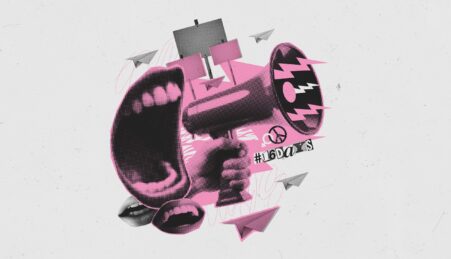
Humanity Hallows Issue 4 Out Now!
Pick up your copy on campus or read online
“A champion of the left and a thorn in Washington’s side, Fidel Castro was eventually defeated by old age, an unusually peaceful end for a man who fought so many battles, both in war and in politics”.
By Ryan Geraghty
Featured image credit: Marcelo Montecino on Flickr
Fidel Castro, leader of the legendary 26th of July Movement, Cuban leader for almost half a century, and one of the most controversial political figures of the twentieth century, has died of old age at 90. Cuba has entered an official period of mourning until 4th December when his ashes will be scattered.
To his followers, Castro is the man who overthrew an oppressive totalitarian government with nothing but a handful of soldiers, the man who embarked on an educational campaign raising previously poor literacy levels to 96 per cent, the leader who brought a universally free healthcare system to a poverty-stricken country, and egalitarian who put power into the hands of the country’s poorest and most vulnerable people. All whilst defiantly repelling the world’s biggest superpower (the USA) and maintaining Cuba’s independence.
To his critics, Castro is nothing but an opportunistic dictator whose stubbornness brought the world to the brink of nuclear annihilation, fuelling Cold War tensions whilst ruling Cuba for decades with no political mandate.
Whilst studying law at the University of Havana, Castro was inspired by Marxism and became involved in student activism. After the military coup d’état that brought General Fulgencio Bastista to power, Castro formed an anti-Batista movement and unsuccessfully attempted to overthrow his regime in 1953. Fidel was captured and imprisoned.

Image credit: RV1864 on Flickr
After his release, he fled to Mexico with his brother, Raúl. It was here he met Ernesto ‘Che’ Guevara and rechristened his anti-Batista movement as the 26th of July Movement in memory of the failed uprising. In 1956, Fidel returned to Cuba with his fellow 26th July members and began the legendary revolutionary campaign that would eventually win him power.
After difficult early days, the 26th of July Movement grew in strength, implementing guerrilla tactics and winning peasants over to their cause. Over the next three years, Castro’s guerrillas won the hearts and minds of most Cuban people, while simultaneously planning the Marxist-Leninist government they would set up after the war.
In January 1959, Castro triumphantly returned to Havana, officially ending the war and beginning what would be the longest non-royal leadership of the twentieth century. He ousted Batista’s supporters, with some fleeing and many others being imprisoned or killed. He then set up a socialist state, aggressively fighting illiteracy whilst setting up a free national health service and implementing the First Agrarian Reform, which stripped land and property from the rich and placed it into the hands of Cuban peasants.

Image credit: lezumbalaberenjena on Flickr
On the international stage, Fidel’s rise to power caused much turbulence. Relations with the U.S. quickly soured and Cuba instead sought an alliance with the Soviet Union, setting up the dangerous situation of a communist ally ninety miles from the coast of Florida. The U.S. made several attempts to oust Castro: the most notable being the 1961 Bay of Pigs invasion, where Cuban exiles were sent to Cuba with U.S. backing. Castro repelled the attack, proving his strength as a leader and embarrassing the Americans on an international scale.
Rising tensions and continued conflicts between Cuba and the U.S. led to the Soviet Union intervening, with Castro allowing nuclear missile silos to be set up in Cuba. This led to the infamous Cuban Missile Crisis, where the world came within touching distance of a full-scale nuclear annihilation. Afterwards, the U.S. agreed to cease its attacks on Cuba, though the trade embargo set up by the States remains in place to this day. The next few decades were far from peaceful, however, with over 600 assassination attempts made on Castro’s life. Ever the survivor, Castro lived on, much to the displeasure of several American administrations.
After the fall of the Soviet Union, Cuba’s economy crashed. Castro managed to save the country, but the idealistic socialist dream envisioned after the Cuban Revolution seems a distant memory. Cuba has become a relic of communism, but it remains stubborn enough to stay on its feet despite the fall of much larger communist nations. In a world fuelled by capitalist globalisation, Cuba has held its own, yet it has not prospered. In 2006, due to poor health, Castro handed over many political duties to Raul. He officially stepped down in 2008, ending a 49-year period as the country’s leader.

Image credit: Un divertimiento de @saulomol on Flickr
Now, after his death, Cuba mourns its great revolutionary leader. Around the world, opinions vary on Castro: a hero to some, a tyrant to others. Nevertheless, Castro’s impact on Cuba and the world is undeniable. A champion of the left and a thorn in Washington’s side, Fidel Castro was eventually defeated by old age, an unusually peaceful end for a man who fought so many battles, both in war and in politics. Whilst it seems unlikely Castro’s death will affect Cuba’s politics with Raul taking his place, the death of Fidel Castro marks the final extinguishment of any remaining embers of revolutionary spirit.
Today, Fidel’s followers must say farewell to a true revolutionary icon. Viva la revolución!
Ryan Geraghty is a freelance journalist and political writer based in Manchester. He is a contributor to The Word newspaper and is currently studying M.A. in Multimedia Journalism. Follow him on Twitter: @RP_Geraghty









Leave a reply